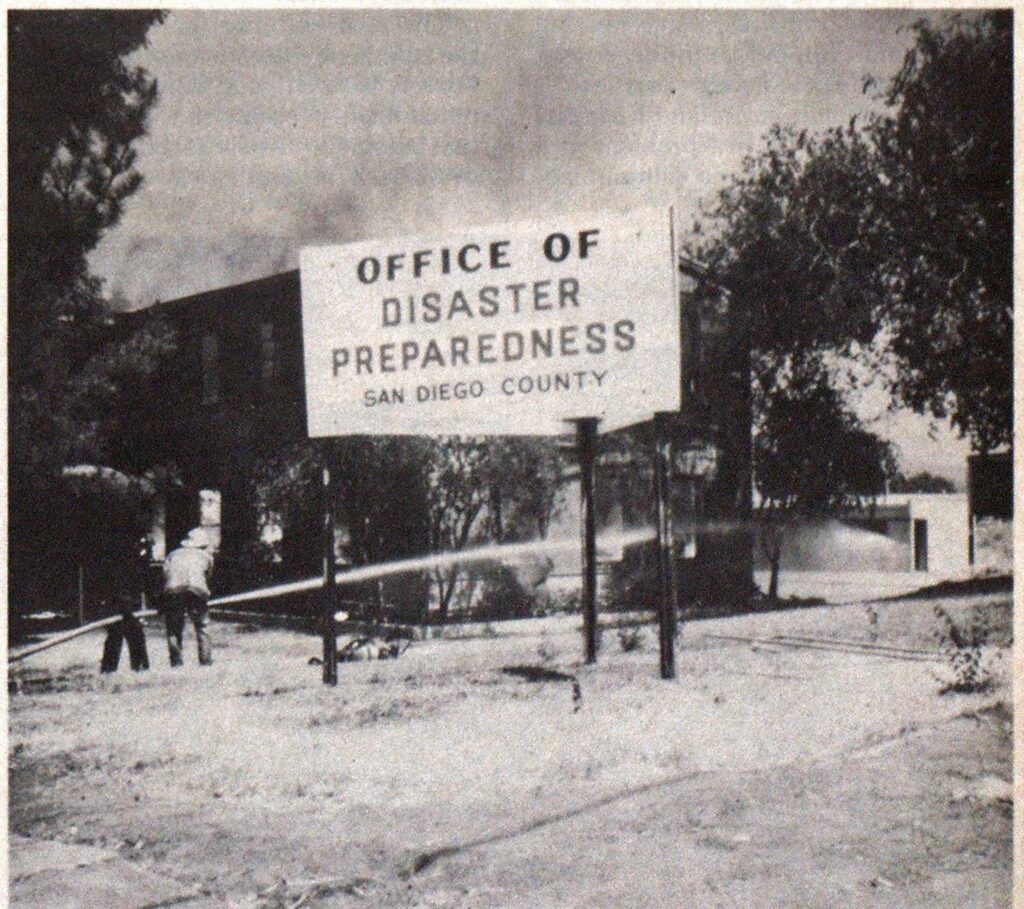
Improve Skills and Build Confidence By Burning a Building for Training
features
One of the best methods of training is simulation. The most realistic simulation is to have actual fire in a burndown building. In this way, fire fighters can build confidence and improve the particular skills they need—all under the watchful eyes of qualified instructors.
In El Cajon, Calif., San Diego County training officers recently conducted a large-scale burndown. It was organized using a structured incident command system (ICS). The 300 fire fighters participating in the seven days of training exercises came from several fire departments throughout the county.
The building being used for this exercise was an old Office of Disaster Preparedness (ODP) building. It was a two-story, wooden pre-World II building divided into two sections. The building had trenched ventilation holes precut into the roof and covered with Sheetrock. If the fire became unmanageable, the Sheetrock would be pulled and vertical ventilation would be accomplished immediately.
Experienced leaders
The day started off by dividing the participants into crews of four or five members with an experienced fire fighter or fire officer as a crew leader. The classes were conducted by experienced fire instructors and had safety officers to assist in the exercises.
Classroom activity was next, starting with an introduction to the ICS and how it applied to the exercises being conducted that day. The next class was in the preservation of the fire scene and fire cause determination. Both subjects were presented on a videotape recorder. The National Guard provided tents for classrooms and a generator for power.
The crews then reported to the supply tent for the assignment of their breathing apparatus. After checking out their equipment, the participants reported to the interior of the building with full turnouts on for a demonstration of thermal balance and flashover. The instructor also discussed the use of nozzle streams and ventilation.
The attack
Now what everyone was waiting for: the actual fire fighting. The crews met with the division chief and were given their assignments (attack team, backup team, safety team or standby team). The suppression and rescue chief conducted the fire attack operations and the incident commander took charge of the overall operation. The incident command center (a communication vehicle) was brought down from the California Office of Emergency Services in Corona.
After each attack and extinguishment cycle was accomplished, the crews would rotate and change assignments. The attack crews moved to recharge their breathing apparatus. The other teams would move up a position and the backup crew would prepare for the next fire. At this time the other division would start their fire. There was only one side actually training on live fires at a time.
During the fire fighting operations there were a few minor injuries which required first aid. This possibility was covered in advance by establishing a medical unit. A tent was set up and an ambulance was made available. The incident command post had the ability to contact the local fire department dispatch center by radio or telephone.
The end of each day required thorough overhaul and dewatering. The breathing apparatus were returned to the supply tent after being recharged at the air supply unit. Next, all participants reported to the classroom for a critique on the day’s activities. At this time each participant was issued a state certificate for participation.
Critique
What makes a successful burndown? Here are a few areas to be planned and managed:
- Preparation of the building, supplies and equipment.
- Obtain an ample number of qualified instructors.
- Plan the interconnected activities to be accomplished to reduce the sitaround time for the participants.
- Organize the fireground activities through a command structure.
- Provide backup teams and safety personnel.
- Set up a medical unit prior to the need.

Photo by the author

